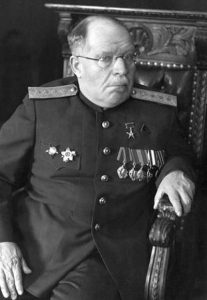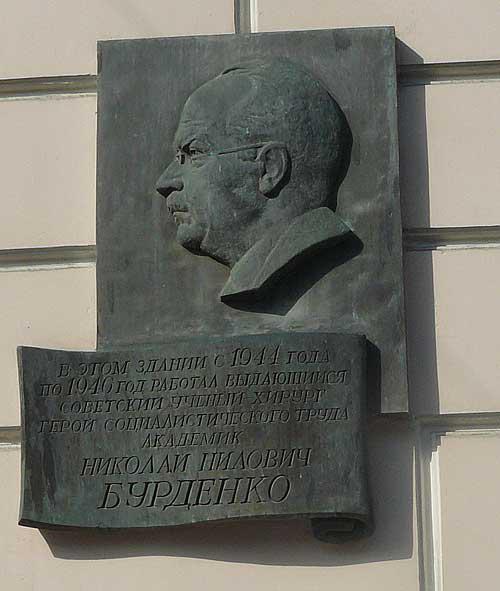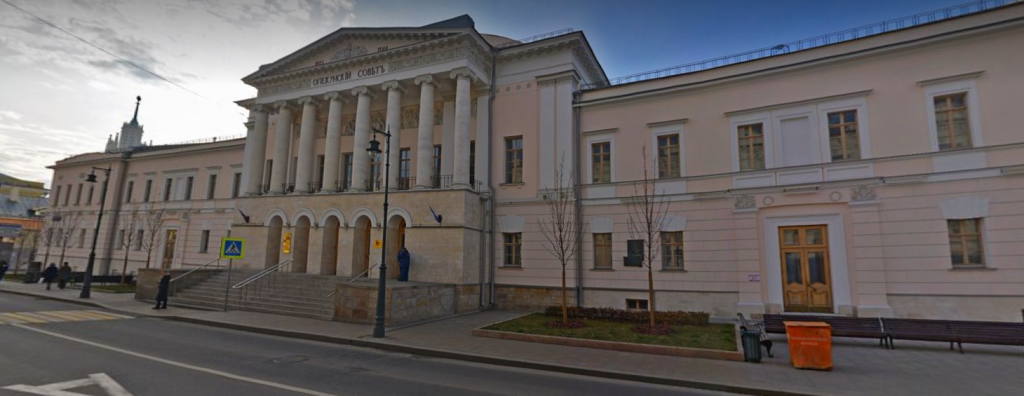Nikolay Nilovich
Burdenko
1876-1946

Nikolay Nilovich Burdenko was the Chief Surgeon of the Red Army, academician of the USSR Academy of Sciences, Lieutenant General of the medical Service, Moscow. He was born in the village of Kamenka, the Nizhnelomovsky district, the Penza province, now it is a city of the Penza region. He finished Kamensk Zemsky School, Penza Theological College in 1891. He entered Penza Theological Seminary and graduated from it in 1897. In 1898, against his father’s will, he entered the First Siberian Tomsk Imperial named after His Imperial Majesty Aleksander II. In 1901 Burdenko was expelled from the university for participating in the student revolutionary movement and had to leave Tomsk. He worked for almost a year in a colony for children with tuberculosis. With the help of a number of professors, Burdenko was allowed to return to the university. In 1903 he transferred to Yuriev University (now it is in Tartu, in Estonia). In accordance with the order of the time, teachers and students went out to fight epidemics. Burdenko was an indispensable participant in such medical detachments, participated in the elimination of epidemics of typhus, smallpox, scarlet fever. With the beginning of the Russian-Japanese war in 1904, he volunteered for the military sanitary detachment. Over a year, as a part of the detachment, he participated in combat operations in Manchuria. He was wounded while carrying wounded soldiers out from under enemy fire. He was awarded the soldier’s St. George Cross. At the beginning of 1905 he returned from Manchuria, from March to August 1905 he worked as a subordinate at the 1st Riga City Clinical Hospital, then resumed his studies at the university. These circumstances allowed Nikolai Burdenko to graduate from Yuriev University only in 1906, but he was already a well-established scientist and practitioner. At the beginning of the First World War, he again voluntarily achieved an appointment to the active army. From September 1914 he was an Assistant to the head of the medical unit of the Red Cross at the armies of the North-Western Front, from December 1914 –the head of the hospital in Warsaw, from February 1915 – a consultant surgeon in the Vilna and Rigovensky districts, from August 1915 – a consultant surgeon of the 2nd Army of the Western Front, from 1916 – a consultant surgeon of hospitals in Riga. He was engaged in the organization of military sanitary detachments, hospitals and medical evacuation points. He operated a lot in field and army hospitals. He actively sought to improve the medical care of the wounded at all stages, starting with their evacuation from the battlefield. In March 1917 under the Provisional Government, he was appointed as the Acting Chief Military Sanitary Inspector of the Russian Army, from May 1917 – the Chief field Military sanitary Inspector. In the summer of 1917, he was shell-shocked in battle when leaving for the active army. For health reasons, he returned to Yuriev University and was appointed as the head of the Department of Surgery, which was once headed by his highest authority – the great Professor N.I. Pirogov. Since 1929, Nikolai Burdenko was the director of the neurosurgical clinic at the X—Ray Institute of the People’s Commissariat of Health of the USSR, on the basis of which the Central Neurosurgical Institute was established in 1934 – the first in the world. Nikolay Burdenko was one of the first to introduce surgery of the central and peripheral nervous system into clinical practice; he investigated the cause and methods of shock treatment, made a great contribution to the study of processes occurring in the central and peripheral nervous system in connection with surgical intervention, acute injuries, developed a bulbotomy – an operation in the upper spinal cord. Burdenko created a school of surgeons with a pronounced experimental direction. The valuable contribution of Burdenko and his school to the theory and practice of neurosurgery was the work in the field of oncology of the central and autonomic nervous system, pathology of cerebrospinal fluid circulation, cerebral circulation, etc. Nikolai Burdenko made a real revolution in the treatment of brain tumors. Brain surgery before Burdenko was rarely performed and there were units all over the world. Professor Burdenko developed simpler methods of carrying out these operations and thereby made them massive. In addition, he proposed a number of original operations, which had never been performed before. Thousands of people had been saved from death and severe illnesses due to the fact that Professor Burdenko discovered the possibility of performing operations on the dura mater of the spinal cord, transplanting nerve sections, operating on the deepest and most critical areas of the spinal cord and brain. Surgeons from England, the USA, Sweden and other countries came to Moscow to join new ideas and learn from the Soviet scientist. From 1929 he was the chairman of the Moscow Surgical Society, from 1932 to 1946 – the Chairman of the Board of the Society of Surgeons of the RSFSR. Despite his progressive hearing loss, he worked exceptionally hard. In 1937 he was appointed as the Chief Consultant Surgeon at the Military Medical Directorate of the Red Army. In 1939 N.N. Burdenko was elected a full member of the USSR Academy of Sciences. And a few months later, the 64-year-old Academician went to the front of the Soviet-Finnish war, where he spent the entire period of hostilities. It was based on the experience of the Finnish war that Burdenko developed an advanced regulation on military field surgery at that time, implemented and successfully applied in the Great Patriotic War. He was the editor-in-chief of a number of medical journals. With the beginning of the Great Patriotic War, Nikolai Nilovich Burdenko was drafted into the Red Army on August 1, 1941. At the same time, he was appointed as the Chief Surgeon of the Red Army and he spent a lot of time on the fronts. For complex operations, he often got to regimental and divisional medical units. He personally performed thousands of complex operations. He organized the work on the prompt collection of materials about wounds and the introduction into practice of the latest methods of treatment. In the years of the war, he created the doctrine of the battle wound. At the head of a team of doctors, he personally tested new medicines in frontline hospitals – streptocide, sulfidine, penicillin. Soon, at his insistence, surgeons of all military hospitals began to use these drugs. Many thousands of wounded soldiers and officers were saved thanks to the incessant scientific research that Burdenko conducted throughout the war. In 1941, when crossing the Neva, Academician Burdenko was bombed and was shell-shocked. The consequences were very severe – one after another, he suffered two brain hemorrhages, then a stroke, and almost completely lost his hearing. The scientist was evacuated to Omsk. However, Burdenko continued to work in a hospital bed, and as soon as the improvement came, he immediately returned to Moscow and resumed his trips to the front. By the decree of the Presidium of the Supreme Soviet of the USSR dated May 8, 1943, Nikolay Nilovich Burdenko was awarded the title of the Hero of Socialist Labor with the award of the Order of Lenin and the Hammer and Sickle gold medal for outstanding scientific achievements in the field of Soviet medicine and selfless fruitful work in organizing surgical care for soldiers and commanders of the Red Army wounded in battles with the German invaders. In 1944 he initiated the creation of the Academy of Medical Sciences of the USSR. At its first meeting in the same year, Nikolai Nilovich Burdenko was elected as an Academician and the first President of this Academy. He was the author of over 400 scientific papers.
Address: Moscow, Solyanka str., 14, p. 3

